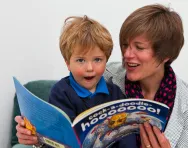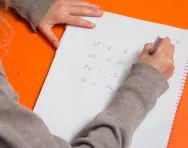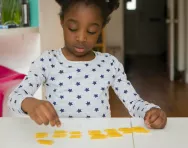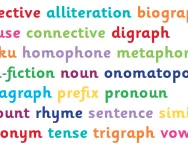Important update from TheSchoolRun
For the past 13 years, TheSchoolRun has been run by a small team of mums working from home, dedicated to providing quality educational resources to primary school parents. Unfortunately, rising supplier costs and falling revenue have made it impossible for us to continue operating, and we’ve had to make the difficult decision to close. The good news: We’ve arranged for another educational provider to take over many of our resources. These will be hosted on a new portal, where the content will be updated and expanded to support your child’s learning.
What this means for subscribers:
- Your subscription is still active, and for now, you can keep using the website as normal — just log in with your usual details to access all our articles and resources*.
- In a few months, all resources will move to the new portal. You’ll continue to have access there until your subscription ends. We’ll send you full details nearer the time.
- As a thank you for your support, we’ll also be sending you 16 primary school eBooks (worth £108.84) to download and keep.
A few changes to be aware of:
- The Learning Journey weekly email has ended, but your child’s plan will still be updated on your dashboard each Monday. Just log in to see the recommended worksheets.
- The 11+ weekly emails have now ended. We sent you all the remaining emails in the series at the end of March — please check your inbox (and spam folder) if you haven’t seen them. You can also follow the full programme here: 11+ Learning Journey.
If you have any questions, please contact us at [email protected]. Thank you for being part of our journey it’s been a privilege to support your family’s learning.
*If you need to reset your password, it will still work as usual. Please check your spam folder if the reset email doesn’t appear in your inbox.
What are national curriculum levels?

As of September 2016, the format and marking system for SATs has been overhauled. Now, children no longer get their results as a National Curriculum level, but as a scaled score and a judgement on whether or not they have reached the national standard expected for their age.
Our parents' guide to the new grading system explains how it works, how SATs tests were affected and gives more information about the Reception baseline assessment test.
This article gives an overview of the old system of levels.
So, what are National Curriculum levels?
They’re a set of eight bands, set by the Government, used to measure a child’s progress against other pupils of the same age, across the country. The levels applied to children in KS1, KS2 and KS3.
Please note: National Curriculum levels were replaced by a new primary-school grading system in September 2014 for children in Years 1, 3, 4 and 5. From September 2015 the new primary-school grading system also applied to children in Years 2 and 6.
What about levels for Reception children?
Children coming to the end of the Early Years Foundation Stage are assessed according to different levels. These are:
• Level 1: working towards the level expected
• Level 2: working at the level expected
• Level 3: exceeding the expected level
Who set the levels?
They were drawn up by the Department for Education in consultation with subject specialists, teachers, Ofsted representatives and other experts in education. Drafts were then published and sent out for wider consultation before being formally agreed.
Who decided what levels children were given?
In Years 2 and 6, children take SATs which were used to give them an official National Curriculum level in Reading, Writing and Maths. These were the statistics used to calculate a school’s achievement and pupil progress. Some schools also factor in teacher assessment, based on ongoing classroom activities, when reporting a child’s levels back to parents: ‘At our school, if there is a discrepancy between SATs results and teacher assessment, we always go with teacher assessment,’ says Year 5 teacher Bethan.
In Years 1, 3, 4 and 5, there are no formal SATs, so schools can choose how to assess a child’s level. Some use optional SATs papers (for Years 3, 4 and 5), which can either be internally or externally marked; some set their own end-of-year tests; some rely purely on teacher assessment; some use a combination of these methods. Children still have to be awarded a level or grade, but you may not be told your child’s actual level: ‘I don’t give out levels unless parents ask, because it leads to unhelpful comparisons,’ says Year 1 teacher Sam.
What national curriculum level should a child be at?
Each National Curriculum level was divided into sub-levels:
- C means that a child is working at the lower end of the level
- B means that he’s working comfortably at that level
- A means that he’s working at the top end of the level
As a guide, here’s what national curriculum level the Government suggested a child should achieve by the end of each school year:
| Year 1 | Level 1b |
| Year 2 | Level 2a-c |
| Year 3 | Level 2a-3b |
| Year 4 | Level 3 |
| Year 5 | Level 3b-4c |
| Year 6 | Level 4 |
By the end of Year 6, approximately 75 per cent of children will achieve a Level 4; the top 10 per cent will achieve a Level 5, and the ‘exceptional’ top one per cent, a Level 6. Children who achieve a Level 4 are expected to go on to pass five or more GCSEs at grade A*-C.
If your child has just done his KS2 SATs, initially, he will only be given an overall level (for example a Level 4); sub-levels (for example, 4B) are then allocated later on once the results have been reviewed nationally, and thresholds set.
How quickly should children progress?
When national curriculum levels were being used, the Department for Education suggested that a child should progress two full levels per key stage. Because KS1 covers only two school years, this means that a child should have progressed one level per year (for example achieving Level 1B in Year 1, and Level 2B in Year 2). But as KS2 covers four school years, the expected rate of progress was slower – effectively half a level per year (for example, from a 3C at the end of Year 3 to a 3A at the end of Year 4).
Which subjects were covered by National Curriculum levels?
Officially, schools only had to report pupils’ National Curriculum levels in Reading, Writing and Maths. However, the curriculum also covers a number of other subjects (including Science, ICT, Art, History, etc). The Department for Education published attainment level descriptions for these subjects, but schools could choose to report pupils’ progress to parents in another way, such as ‘achieving expectations,’ ‘above expectations,’ and so on.
In addition, there are a number of non-statutory subjects, including Religious Education and Personal, Social and Health Education. For these, the Department for Education published end-of-key-stage statements to help teachers track progress, but levels were not awarded.
Were national curriculum levels accurate across different schools?
In theory – but there was always some inconsistency. Within a school, teachers moderate each other’s marking; in addition, Year 2 and Year 6 SATs are externally marked and moderated, and optional SATs in Years 3, 4 and 5 may be externally marked and/or moderated. But teachers are human, and there may be slight differences in how they assess their pupils, so it’s better to compare your child against the national average, rather than his friend in a different school.
Many schools followed a structured approach to assessment, called Assessing Pupils’ Progress (APP). This provided clear assessment guidelines, along with examples of pupils’ work at each National Curriculum level to use as a benchmark. You can download an example APP sheet to see what they looked like.
What if my child is doing better or worse than expected?
‘Remember that levels are of more importance to the school than to your child,’ says Year 5 teacher Bethan. They were used by schools to help with progress and learning, with each child given specific learning objectives based on his own National Curriculum levels, to help teachers plan lessons that reach children of different abilities, to help with resourcing and support (e.g. allocating teaching assistant support where it’s most needed), to set targets and expectations for children, and to highligh Curriculum areas that needed additional focus.
‘Rather than getting hung up on levels, concentrate on how your child is progressing from one year to the next,’ advises Bethan. ‘If you’re in any way concerned or surprised about your child’s level, then do speak to his teacher, but bear in mind that his level will actually help him to get the support he needs next year: for example, through extra help in the classroom or extension work if he’s exceeding expectations.’
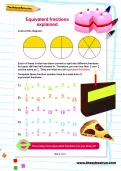
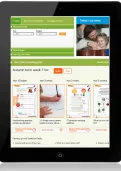
Boost Your Child's Learning Today!
- Get a tailored learning plan for your child
- English & maths resources added each week
- Interactive & printable activities

